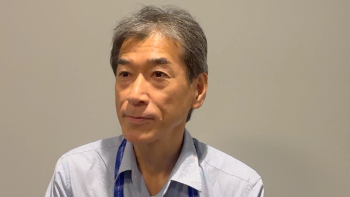
- Oncology Vol 30 No 4_Suppl_1
- Volume 30
- Issue 4_Suppl_1
(S047) Clinical Outcomes Following One or More Courses of Stereotactic Radiosurgery for Brain Metastases From Breast Cancer
SRS is effective in treating BMs from breast cancer, and multiple courses of SRS are feasible and safe in select patients. Since this population can have a prolonged survival, aggressive local treatment with SRS can lead to improved survival and prevention of neurologic deficits.
Paul Youn, MD, Michael Cummings, MD, James Bates, MD, Michael T. Milano, MD, PhD; Department of Radiation Oncology, University of Rochester
OBJECTIVE: Stereotactic radiosurgery (SRS) is a standard approach to treatment of brain metastases (BMs) that are limited in number and extent. Breast cancer patients with BMs may experience prolonged survival and develop recurrent BMs. We examined a cohort of patients with BMs from breast cancer treated with SRS, focusing on long-term survivors at risk of distant brain failure.
METHODS: Through a review of all patients treated with SRS for BMs at a single institution from January 2005 to December 2014, a total of 34 patients with metastatic breast cancer were identified. Patient, lesion, and treatment-related characteristics and radiologic responses were pooled. The Kaplan-Meier method was used to calculate local control, distant cranial control, and overall survival (OS). A Cox regression model was used to associate prognostic factors with treatment outcomes.
RESULTS: Thirty-four patients received SRS to 124 lesions. Local control and distant cranial control rates at 12 months were 66.6% and 68.1%, respectively. On univariate analysis, lesion size and SRS dose did not have a significant impact on local control. Human epidermal growth factor receptor 2 (HER2) positivity was associated with worse local control, with a hazard ratio (HR) of 2.5 (P = .04). OS rates at 12 months and 24 months were 66.3% and 43%, respectively. HER2 positivity was associated with a trend of improved survival (HR, 0.5; P = .1). Among 17 patients who survived more than 12 months, 10 developed distant BMs at a median of 16 months and received further SRS to 43 lesions. Nine patients maintained Karnofsky performance status over 80, and median OS after the second course of SRS was 21 months. No neurologic toxicity ≥ grade 3 was observed in this cohort.
CONCLUSIONS: SRS is effective in treating BMs from breast cancer, and multiple courses of SRS are feasible and safe in select patients. Since this population can have a prolonged survival, aggressive local treatment with SRS can lead to improved survival and prevention of neurologic deficits.
Proceedings of the 98th Annual Meeting of the American Radium Society -
Articles in this issue
Newsletter
Stay up to date on recent advances in the multidisciplinary approach to cancer.
















































































